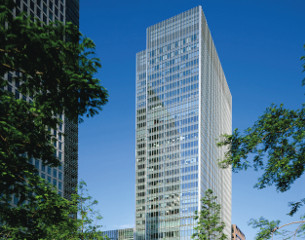Major socio-economic trends are affecting the design and content of flexible benefits plans, and employers need to consider their impact on their own organisation.
If you read nothing else, read this…
- Technological advances have driven a need for flexible benefits to be accessible by employees at any time and anywhere.
- Wealth management is a growing feature of flexible benefits plans because of the economic downturn and ageing workforces.
- Employers must be mindful of emerging socio-economic trends.
Three key social trends have driven the development of flexible benefits plans in recent years, but technological advance is perhaps the greatest influence.
The rising popularity of mobile handsets and tablet devices, such as smartphones and iPads, through which employees can view and manage their lives has resulted in younger staff demanding wider access to their benefits package.
Niall Munro, a director at employee benefits provider Fair Care, says employers are slowly responding to this demand. “There has been a shift to mobile technology, so that benefits that are online can be seen and easily accessed from anywhere,” he says. “Employers will have to become more sophisticated about how they deliver that.”
Mobile communications
But Charlotte Godley, a senior consultant at Mercer, says some employers are already relatively sophisticated in their approach to flex communications. “The expectation that a flex scheme can be accessed by mobile devices and tablets is an obvious one, but in terms of the way schemes are communicated, there’s a lot more use of video, so less words, more sound,” she says.
Some employers are also using podcasts with links to Facebook pages that are set up, for example, so employees can comment about their benefits offering. Some platforms also allow employees to click a ‘like’ button that links through to that Facebook page, so they can see how many of their colleagues liked a particular benefit.
“Flex platforms are moving to a model that looks and feels like a Facebook-type page, in terms of sharing a lot more information about what others are doing, but it’s a very new thing, so it’s too early to say whether it’s driving take-up,” says Godley.
But employers must bear several key points in mind. Charles Cotton, performance and reward adviser at the Chartered Institute of Personnel and Development (CIPD), says: “Social media is important, but it must be a means to an end and not an end in itself. Employers don’t want to spend so much time and energy introducing this into their organisation that they forget what the purpose was, which is obviously to build employee enthusiasm and engagement.”
A number of employers have also upped the number of enrolment windows they offer, increasing the frequency that employees can make changes to their benefits selection. Cotton says: “More providers are now offering this any-time experience, and I’m sure if employers think it’s relevant, then more flexible benefits providers will start to move toward that system.”
Flexible technology choices
Technological developments have also brought a change in flexible benefits choice, with electronic devices, such as iPhones and iPads, becoming popular additions to many employers’ flex plans.
Manesh Patel, senior flex consultant at Lorica Consulting, says: “These meet two objectives: giving employees a piece of technology that’s cheap and also tax-efficient in the case of phones, and tax- or national insurance (NI)-efficient in the case of computers, but also enabling employees to do the action they are expected to do, which is to make their benefits selection.”
Micro-P and Let’s Connect are two IT device providers that are catering for employers’ technology needs.
A further advantage of technological advances in the flex market has been a reduction in employers’ use of paper. Munro says: “Employees can print things when they need them, rather than an employer saying ‘here it is, a pile of papers’, which is historically what would happen in a workplace.”
Healthcare choices
The second biggest driver of the changing shape of flex plans is problems in the National Health Service, which have led to an increase in the number of health and wellbeing benefits, such as private medical insurance and health screening, being offered through flex.
But Munro believes healthcare benefits offering more flexible underwriting criteria are still under development, and it will be some time before these are launched.
Meanwhile, the economic downturn is driving a desire among employers to help their employees manage their finances, as they seek to address the effects of several years of pay freezes and bonus cuts.
This has resulted in the introduction of flexible benefits such as one-to-one independent financial advice.
Lorica’s Patel says: “Wealth management and financial advice is an area of growth, certainly with large FTSE 100 and FTSE 250 employers. It is a big area for them to ensure their staff are using their money and their savings adequately, and that they are not left short when it comes to retirement or leaving the business.”
Ageing workforce
In addition to wealth management, retirement planning is likely to be a growing consideration for employers with an older workforce, as many organisations strive to ensure their staff retire in as much comfort as possible.
The CIPD’s Cotton says: “A big demographic issue is ageing and therefore benefit type will be important. Here, we’re talking about risk benefits, medical, life assurance and critical illness as well as retirement planning and benefits to create and manage [employees’] wealth.”
Employers also need to be mindful of older employees who opt to remain in work following the removal of the default retirement age. Patel says: “I think that’s a definite consideration. We’ve seen private medical schemes and travel insurance schemes where previously the [take-up] age was restricted to 65 and now it’s [been increased] to 75. That 10-year difference has caused a big change, with people who were previously not participating in schemes now taking them up.”
Cotton advises all employers to be mindful of the impact of an ageing population, even organisations with relatively young workforces. “It’s probably better to be ahead of the curve than behind the curve,” he says. “The organisations I’ve been talking to have been thinking about [catering for older staff], but a lot haven’t, and the danger is that they don’t have much change in the workforce and then, suddenly, in five or six years’ time, they find that in one department everyone is aged over 65.”
In conjunction with changing technology, an ageing workforce is also likely to affect the way in which employers offer benefits through flex, making new-style perks, such as eldercare services, available to help staff care for elderly or sick relatives.

Case study: JP Morgan
JP Morgan’s efforts to revamp its flexible benefits plan to boost employee engagement have been shaped by staff demands for greater access to information, in line with the evolution of global technology.
Adam Brooke, employee benefits manager (UK), says: “We need to keep in mind that our employees have everyday access to computers, so that’s going to be the main channel used to engage them. But whether an employee is at work or even at home, they need to be able to access things really quickly and simply, because, obviously, the demands of work are fast-paced and they need to find information quickly.”
The financial services organisation’s flex rejig was part of wider revamp of its entire employee benefits offer, which saw the launch of a single benefits platform, Elements, in 2012 with the help of its flexible benefits platform provider, Vebnet. This replaced individual platforms that JP Morgan ran previously for its flexible benefits, pension scheme and wellness programme.
“There was a bit of a scattergun approach to the way we communicated,” says Brooke. “The information was all there, but it was across a number of sites.”
The flex programme has also seen a secondary enrolment window introduced for its gym membership, provided by GymFlex. Gym membership, together with healthcare top-ups, are aligned with the organisation’s global wellness campaign, which helps to plug any shortfall in National Health Service provision for JP Morgan’s UK employees.
“We were fully aware that with a flexible benefits platform, employees go on once a year and that’s it, and typically they wait until the following year to make changes,” says Brooke. “We wanted to make sure [the platform] was used more, so employees could start to engage and see the benefits more.”
A comprehensive communications strategy to support Elements involved the head of HR for Europe, the Middle East and Africa introducing Elements to employees via email and a personalised, mini flexible benefits guide for each staff member.
The organisation also produced an interactive, electronic brochure for its core benefits package, which replaced a heavy, 60-page printed guide.
JP Morgan saw employee take-up in its benefits platform rocket from 40% to 67% after the launch of Elements in April 2012, and the employer won the ‘Best benefits communications’ category at the Employee Benefits Awards 2013 in June.

Viewpoint: Doctor Angela Wright
Flexible benefits seem to be tailor-made for the current climate. Demographic and macro-economic changes such as an ageing population and increasing student debt, the increased movement of labour across borders and technological innovation, all contribute to a greater diversity of people in the workplace, with a corresponding need for a more flexible approach by employers to rewarding employees with diverse backgrounds and lifestyles.
But how far do they support the concept of i-deals? In her book, I-deals: Idiosyncratic deals employees bargain for themselves, published in May 2005, Denise M Rousseau states that i-deals “typically manifest themselves in the quiet, informal ways in which workers and employees figure out how to make work arrangements flexible enough for each other’s needs”.
However, there is much evidence that, far from individualising reward and benefits packages to meet individuals’ flexible needs, employers in the UK tend to offer quite standardised packages, which may offer limited real choice for employees.
My research has shown that different i-deals suit different demographic and lifestyles. Nevertheless, while individuals do attempt to craft a deal that suits their own circumstances, they tend not to feel comfortable in disclosing their reward preferences to their managers.
On the other hand, even employers with established flexible benefits offerings may organise these in a formulaic way, which seem less an individual deal and more what some researchers have called a standardised package with an individual wrapping.
Despite the limited evidence of i-deals existing in practice, it might be argued that there is scope for reward approaches that dovetail more extensively the values held by employees and the reward offerings of organisations.
HR and reward managers may believe that creating a more individualised offering would cause a lot of extra work. However, new technology and media offer us possibilities that could be utilised to achieve very positive motivational effects. This would need organisations to focus more on their communications (one of the key positives of flexible benefits), particularly recognising that communication should entail more active employee involvement, as distinct from top-down information-giving processes.
I-deals offer a way of structuring conversations between individuals and their employers about pay and benefits, but this requires, as does all good conversation, genuinely two-way communication. For employers, the rewards of this for could be substantial.
Doctor Angela Wright is a senior lecturer in human resource management at Westminster Business School